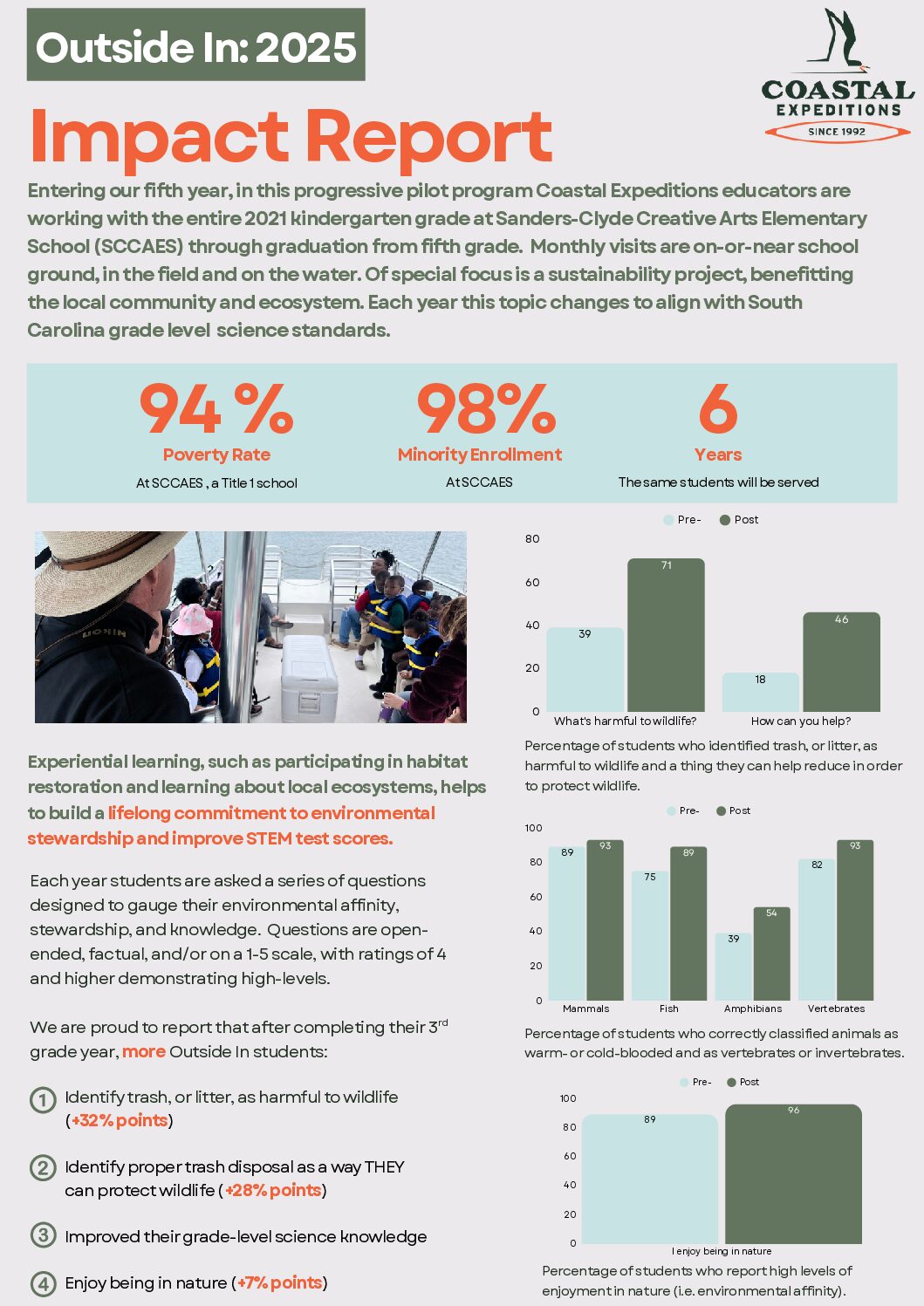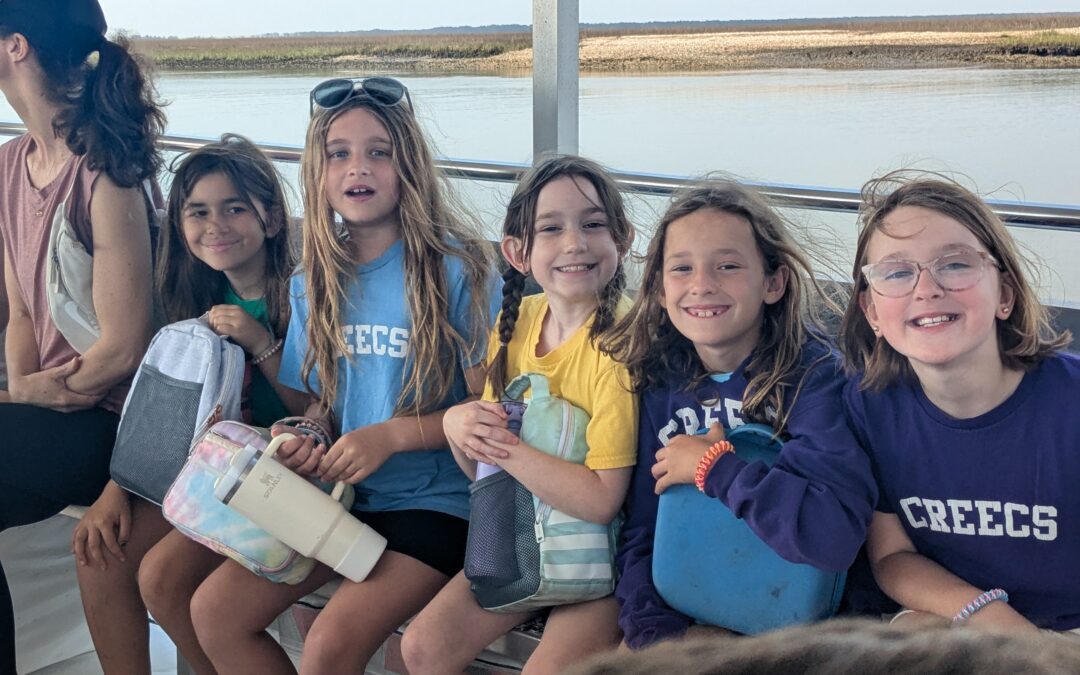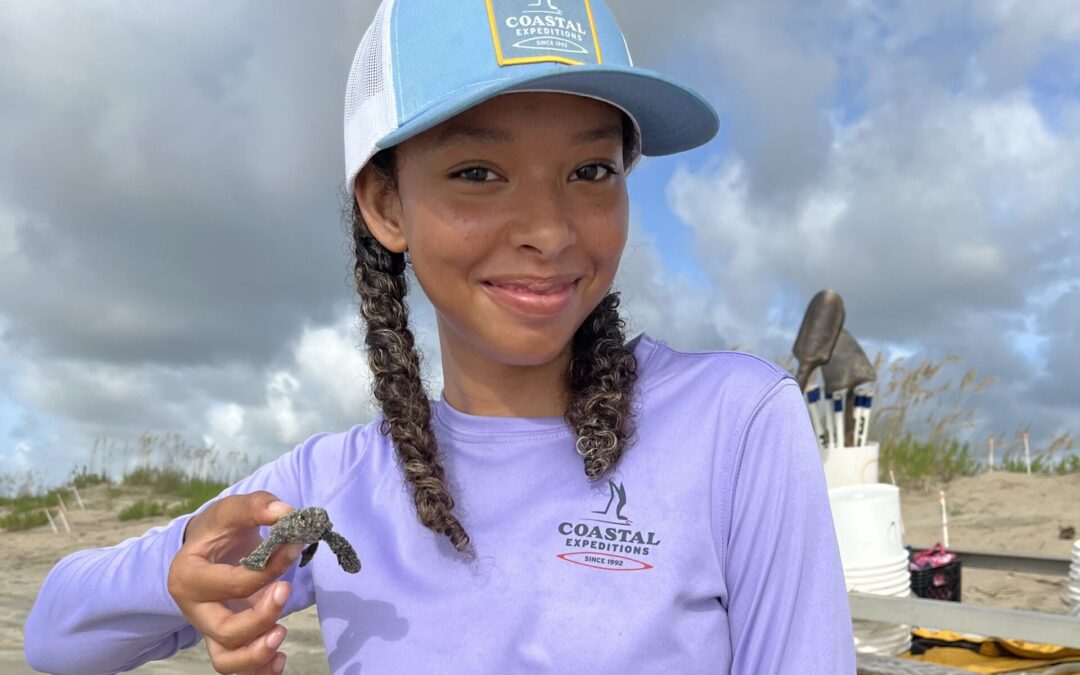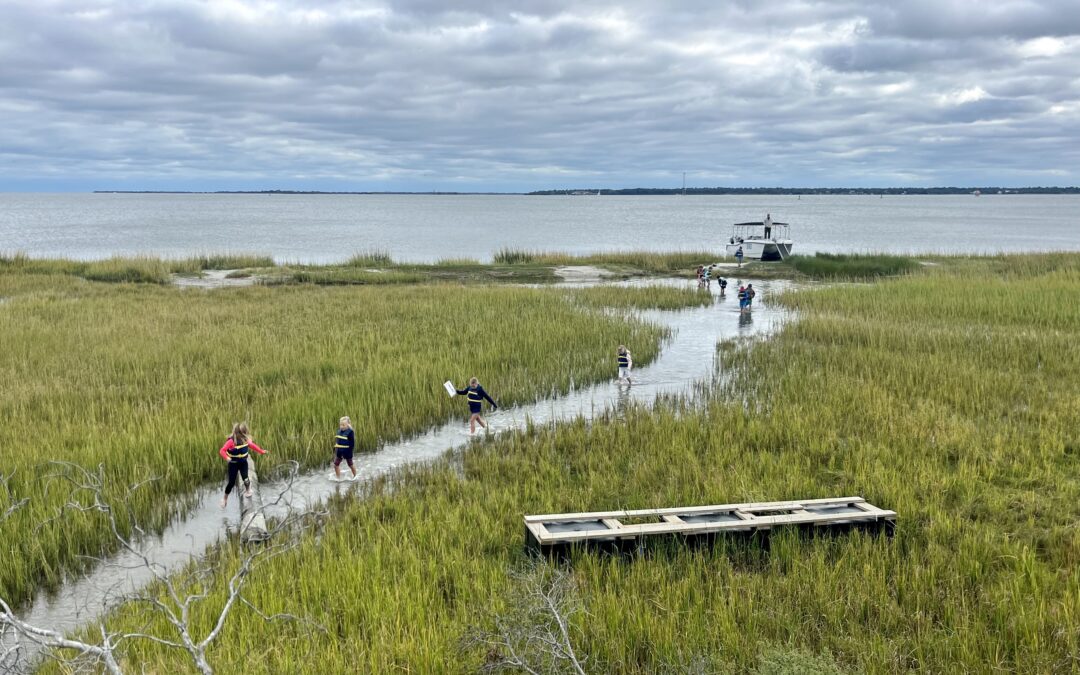GUIDEPOSTS
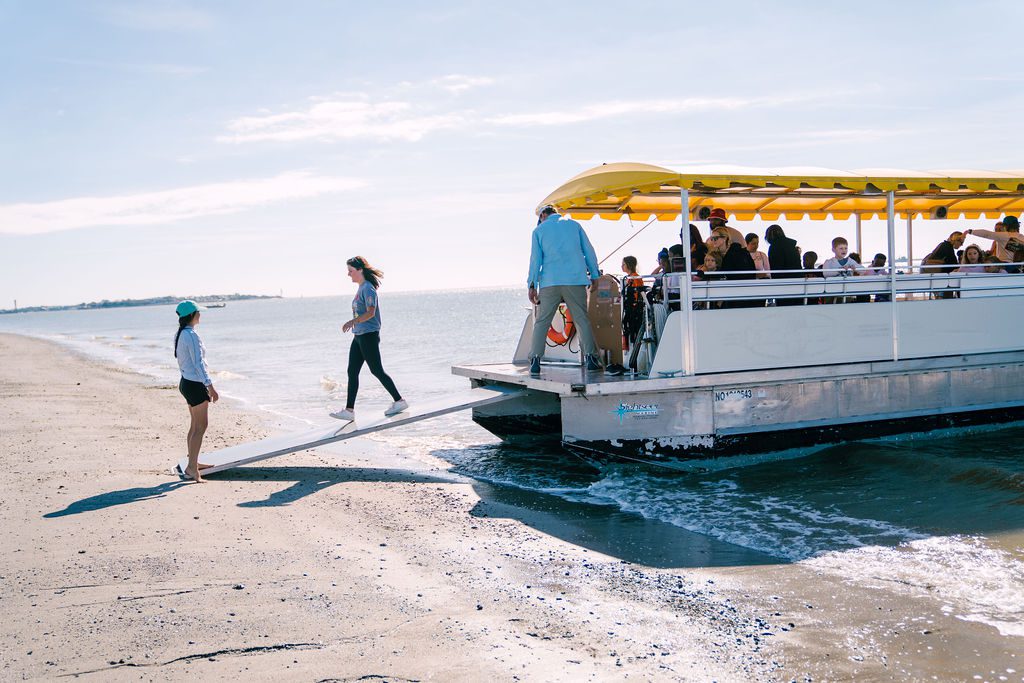
Building Future Stewards: Third Grade Outcomes from Outside In
At Coastal Expeditions, we believe that the best way to inspire the next generation of conservationists is to bring the outdoors directly into their daily lives. That’s the heart of Outside In, a multi-year program we launched in partnership with Sanders-Clyde Creative Arts Elementary, a Title I school in Charleston. Since 2021, our educators have been working with the same group of students from kindergarten through fifth grade—meeting them every month in classrooms, on the school grounds, in the field, and on the water.
As the 2025 report shows, the impact is remarkable.
Third Grade Results: Curiosity Meets Conservation
Over the past school year, students made measurable strides in their knowledge, attitudes, and behaviors toward the natural world:
-
Environmental Awareness
-
A 32-point increase in identifying trash and litter as harmful to wildlife.
-
A 28-point increase in recognizing that proper trash disposal is a way they personally can protect animals
-
-
Science Knowledge
-
Students showed marked improvement in classifying animals by traits such as vertebrate/invertebrate and warm- vs. cold-blooded
-
Overall grade-level science knowledge scores climbed, directly supporting their STEM education.
-
-
Connection to Nature
-
More students reported high levels of enjoyment in being outdoors, with a 7-point increase in environmental affinity
-
These numbers aren’t just statistics—they represent children developing a lifelong connection to the natural world through hands-on, place-based experiences.
Why It Matters
At Sanders-Clyde, 94% of students live below the poverty line and 98% are minority-enrolled
For many, Outside In provides their first sustained access to wild places like Bulls Island or the marshes around Charleston. Each year, the program also introduces a sustainability project that benefits both the local community and the ecosystem, tying lessons to South Carolina science standards and to the lives of the children we serve.
By the end of third grade, the results are clear: when students are given the opportunity to learn through exploration—picking up litter, restoring habitats, paddling tidal creeks—they not only score higher on science benchmarks, they begin to see themselves as stewards of the environment.
Looking Ahead
With two more years to go in this first pilot cohort, Outside In is proving what we’ve always believed: when kids grow up connected to the wild places around them, they’ll fight to protect them.
Learn more about the program and how you can support its future here: Outside In.
